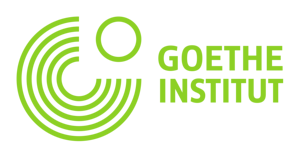“Every time I describe a city, I am saying something about Venice.”
-Italo Calvino, Invisible Cities, 1972
Le Biennali Invisibili is an online project (www.lebiennaliinvisibili.org) authored by Animali Domestici (Alicia Lazzaroni and Antonio Bernacchi), Tijn van de Wijdeven, and Eduardo Cassina; commissioned by Goethe-Zentrum Baku and curated by Alfons Hug.
The project provides a non-linear form of storytelling through a series of 11 “invisible biennials,” each based on a fictional scenario created by the authors of the project, and accompanied by a critical response from an external contributor.
The 11 short texts are inspired by Italo Calvino’s novel Invisible Cities, and depicted by means of detailed immersive 3D environments. The imaginary biennial gatherings each have their own peculiarity, such as a biennial curated by a bot, a biennial where every decision is voted on collectively, a biennial by and for children, etc. 11 contributors from the architectural, artistic, and cultural spheres were prompted with a biennial each, providing a point of critical reflection on the international biennial circuit.
Not all biennials are the same. However, the format of showcasing new work, triggering discussions, and letting new canons emerge, as a time-based event taking place once every two years at the same location, has become the pilgrimage for the culture industries in the new millennium. Biennials (or biennales, a bastardization of the Italian original term that has slipped into as many different languages as locations) not only have the power to forge discourse, but also to unite transient communities through gatherings every two or three years, in cities that are momentarily transformed, and forever associated with those festivals of human culture.
Le Biennali Invisibili is an online project that explores 11 imaginaries of such encounters, under the same lens that Italo Calvino created when describing alternative realities in his book Le città invisibili (Invisible Cities), learning from his extraordinary capacity of orchestrating synthetic oneiric commentaries. Le Biennali Invisibili embraces fiction and pseudo-reality as a framework for curatorial pursuit, as a series of virtual events, proposing -and critiquing- the conventional celebration of the design & art community.
“Visitors” can get a sense of each “invisible” kermesse through multiple elements collected on the online showcase: the story text, constructed recreating Calvino’s style, through a process of critical re-writing; a three-dimensional environment with scenic highlights, to construct a fragmented vision through glimpses of its atmosphere; and a critical response from one of the external contributors, all familiar and participant in the international biennial circuits. Contributors were invited to join this heterogeneous conversation, underlining the nature of each invisible biennial, welcoming diverse modes of reading, and personal interpretations.
The Invisible Biennial texts were written by the authors of the project in a collaborative manner, collaging together parts of text, and adapting sections from the original Invisible Cities book by Calvino.
The three-dimensional environments, sparked from the stories, were generated by incorporating models, and textures gathered from online CC sharing platforms, in a 3D-hoarding ready-made process, constituted another type of encounter: a feedback loop influenced by the transformations in the stories as they were being written up.
Through the interface with various externalities, like the network of contributors, spreading from New York to Hong Kong, the project becomes an open conversation, shaped also by contingencies. On the other hand, the incorporation of Calvino’s text fragments brought slight distortions and even moments of “lost in translation,” welcomed as inspiring detours.
Le Biennali Invisibili is a project by Animali Domestici (Alicia Lazzaroni and Antonio Bernacchi), Tijn van de Wijdeven, and Eduardo Cassina. With contributions from Abhijan Toto, Sofia Pia Belenky, Georg Seeßlen, Gili Merin, Marco Montiel-Soto, Nora Akawi, Araks Sahakyan, Tinatin Gurgenidze, Matīss Groskaufmanis, Merve Bedir, and Sabina Shikhlinskaya. It is curated by Alfons Hug, and commissioned by the Goethe-Zentrum Baku.
Authors
Alicia Lazzaroni and Antonio Bernacchi are the co-founders of Animali Domestici, a design practice with an active interest in non anthropocentric coexistence and ecology in its wider sense. Former instructors and coordinators in INDA, Bangkok, and are currently Assistant Teaching Professors at Aarhus Architecture School in Denmark.
Eduardo Cassina is an architect and urban sociologist. In 2014 he co-founded METASITU, an urban collective devoted to the exploration of new spatial pedagogies. He currently teaches architecture at INDA, Chulalongkorn University in Bangkok. He co-runs an experimental architecture space, Monitor Lizard.
Tijn van de Wijdeven is an architect and educator. He currently teaches at INDA, Chulalongkorn University in Bangkok where he was first year coordinator for several years amongst other roles. He also co-runs the experimental architecture space, Monitor Lizard.
Curator
Alfons Hug is director of Goethe-Zentrum Baku and curator. He has worked extensively in South America, Africa, as well as Asia.






